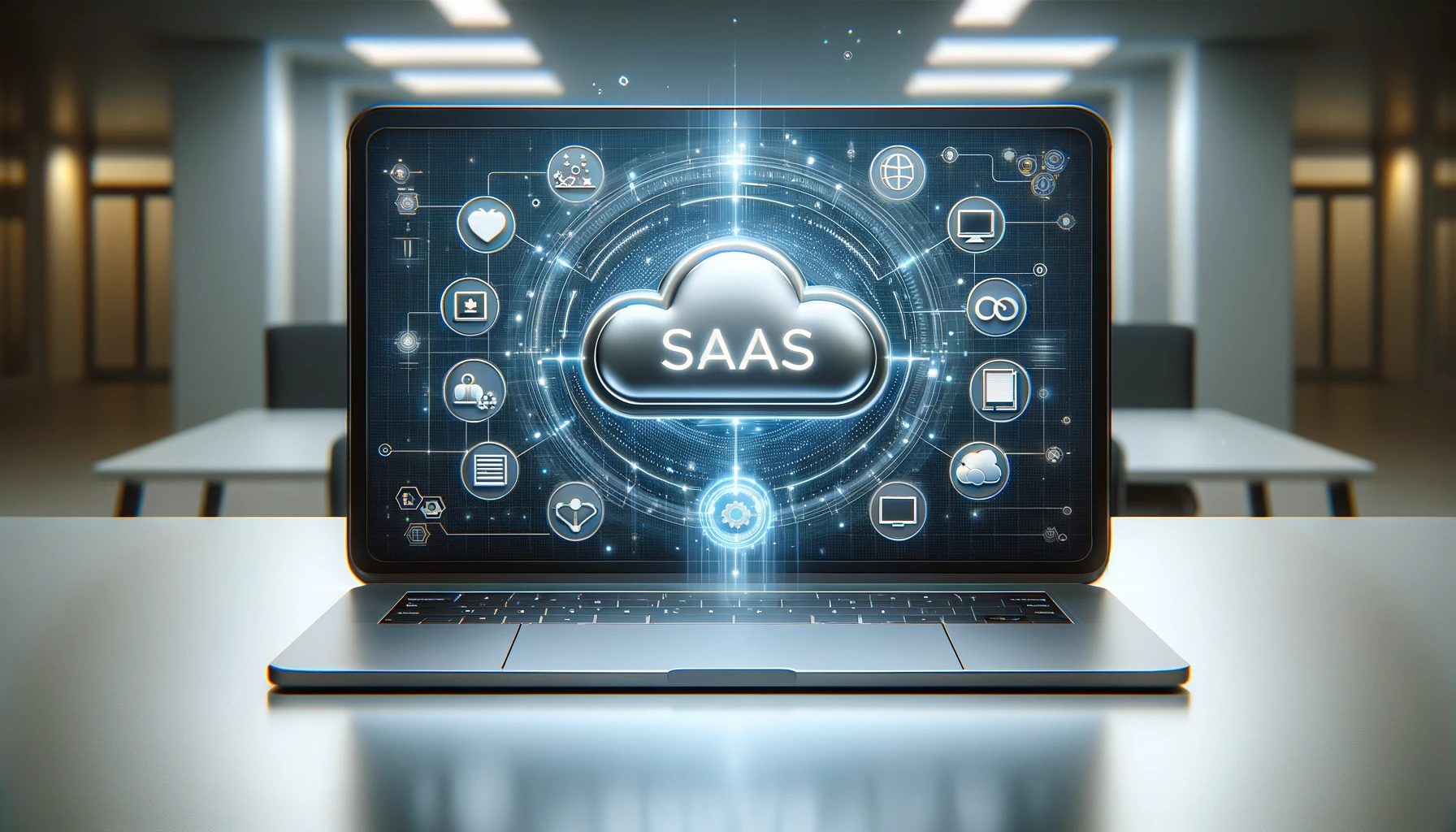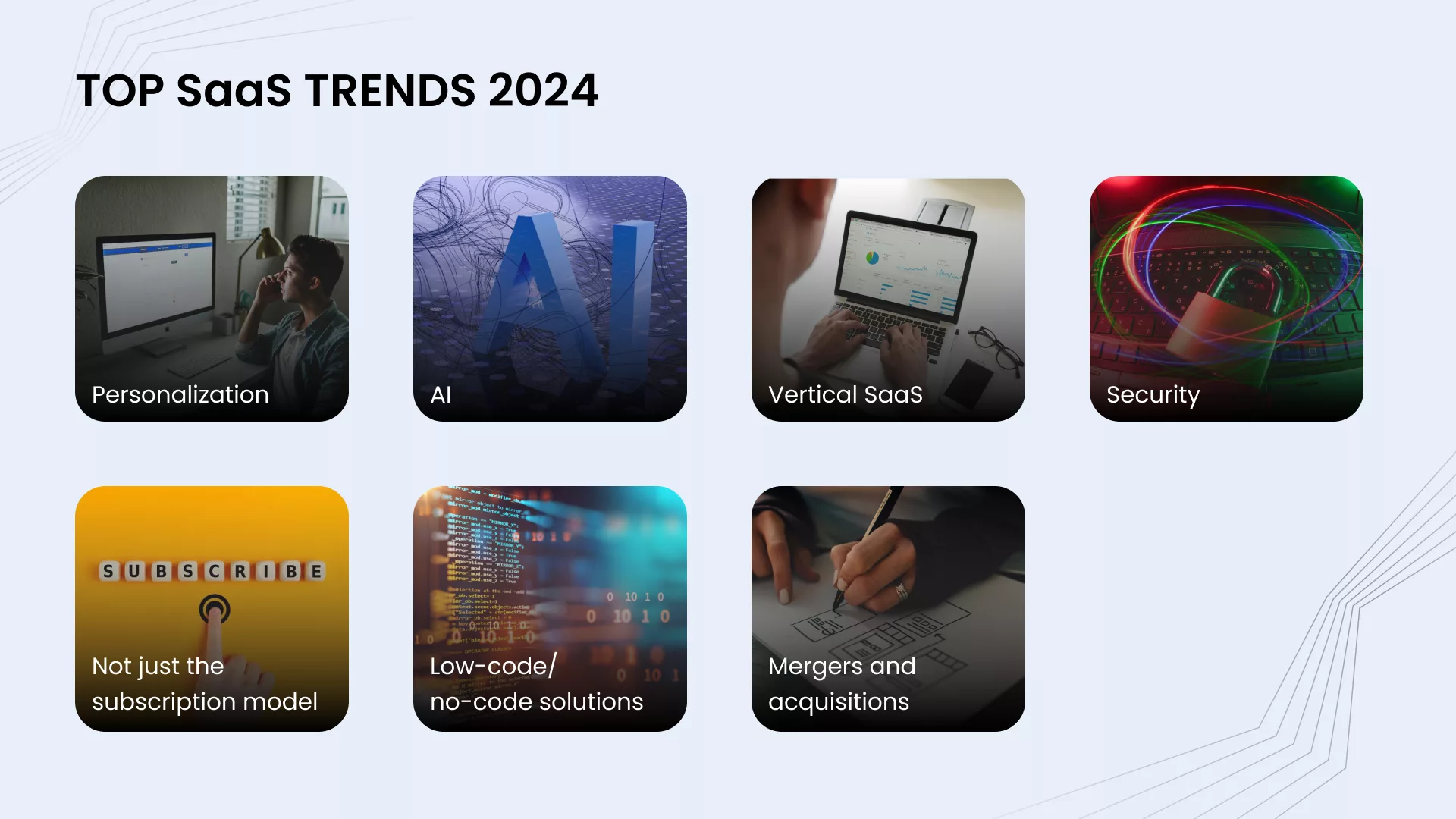
Software as a Service (SaaS) is a method of delivering software applications over the internet, typically on a subscription basis. Here are some key terms.
- Software. A set of instructions that tells a computer what to do. Think of it as a recipe that the computer follows to perform specific tasks.
- Service. An act of doing something for someone else. In SaaS, the service is providing access to and use of the software.
- Subscription. A regular payment made to gain access to a service or product, often for a set period. With SaaS, you pay a recurring fee (monthly, annually) to use the software.
SaaS is like renting an apartment instead of buying a house. The landlord (SaaS provider) maintains the property (software), and you pay rent (subscription fee) to live there (use the software).
The mechanics of SaaS – How does it work?
SaaS has become a dominant force in the software industry. But how exactly does it work under the hood?
- The cloud foundation. At the core of SaaS lies cloud computing. The SaaS provider maintains the software application on powerful servers located in vast data centers.
- Multi-tenant architecture. SaaS applications are designed with a multi-tenant architecture. This means a single codebase serves multiple users (tenants) simultaneously. Each tenant’s data is isolated and secure, even though they share the underlying infrastructure.
- User access and management. Users access the SaaS application through a web browser using a login and password. The provider manages user accounts, access permissions, and ensures secure authentication.
- Subscription model and payment. SaaS operates on a subscription model. Users typically pay a recurring fee (monthly, annually) for access to the software. This fee often covers features, updates, maintenance, and technical support.
- Automatic updates and maintenance. A major advantage of SaaS is the provider’s responsibility for automatic updates and maintenance. You don’t need to worry about downloading and installing updates or fixing technical glitches. The provider handles these tasks, ensuring you have the latest features and security patches.
- Scalability and flexibility. SaaS offers inherent scalability. Users can easily adjust their subscription plan based on changing needs. Need more storage or additional features? Simply upgrade your plan.
- Integration and interoperability. Many SaaS applications offer integration capabilities, allowing them to connect and share data with other tools and services you might use. This fosters a more streamlined workflow.
- Security and data protection. Providers implement robust security measures to protect user data and ensure application accessibility. They are responsible for data encryption, access controls, and disaster recovery plans.
What are the market trends of SaaS in 2024?
The SaaS market is expected to continue its remarkable growth trajectory in 2024. Here are key trends we should expect.

Focus on customer success and personalization
Increased competition is driving a shift towards customer-centricity. SaaS providers will prioritize user experience, offering features and functionalities that cater to specific needs and preferences.
Expect a rise in personalized dashboards, custom workflows, and in-app guidance to enhance user engagement and satisfaction.
Customer success management will become even more crucial, with providers offering dedicated support channels and proactive measures to ensure user adoption and value realization.
AI integration
AI is revolutionizing various industries, and SaaS is no exception. Expect to see increased integration of AI for tasks like:
- Smart automation. Automating repetitive tasks and streamlining workflows using AI-powered tools.
- Predictive analytics. Predict user behavior, identify potential problems, and personalized recommendations.
- Enhanced customer service. Utilizing AI-powered chatbots for 24/7 support and personalized troubleshooting.
The rise of vertical SaaS
Traditional “one-size-fits-all” SaaS solutions are giving way to Vertical SaaS. These are industry-specific applications tailored to the unique needs of a particular vertical market (e.g., healthcare, finance, retail).
Vertical SaaS offers deeper functionality, industry-specific compliance, and pre-built integrations with relevant tools, making it a more efficient and effective solution for businesses in a specific sector.
Security and privacy regulations
Data security and privacy remain top priorities. With stricter regulations like GDPR and CCPA, SaaS providers will need to ensure robust security measures and transparent data practices.
Focus on data encryption, access controls, and compliance certifications will be crucial for building user trust and avoiding regulatory issues.
Subscription model evolution
The traditional subscription model may see some changes. Expect to see options like usage-based pricing gaining traction, where users pay based on their actual usage of the software.
Freemium models might also become more widespread. These offer basic features for free, with premium features requiring a paid subscription.
Low-code/no-code
Low-code/no-code development platforms make building basic applications easier for non-technical users. This trend empowers businesses to create custom solutions without relying heavily on expensive software development resources.
Mergers and acquisitions
As the market matures, we might see an increase in mergers and acquisitions as established players look to expand their offerings and gain market share.
« Back to Glossary Index

